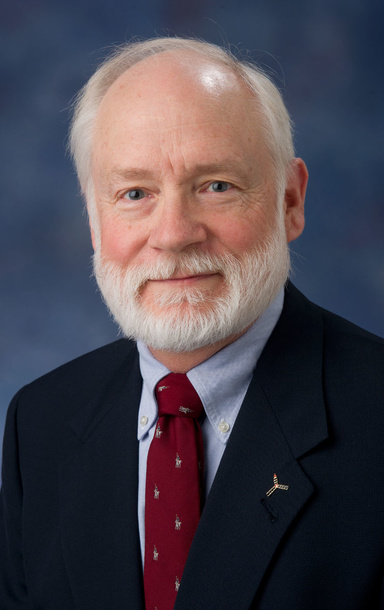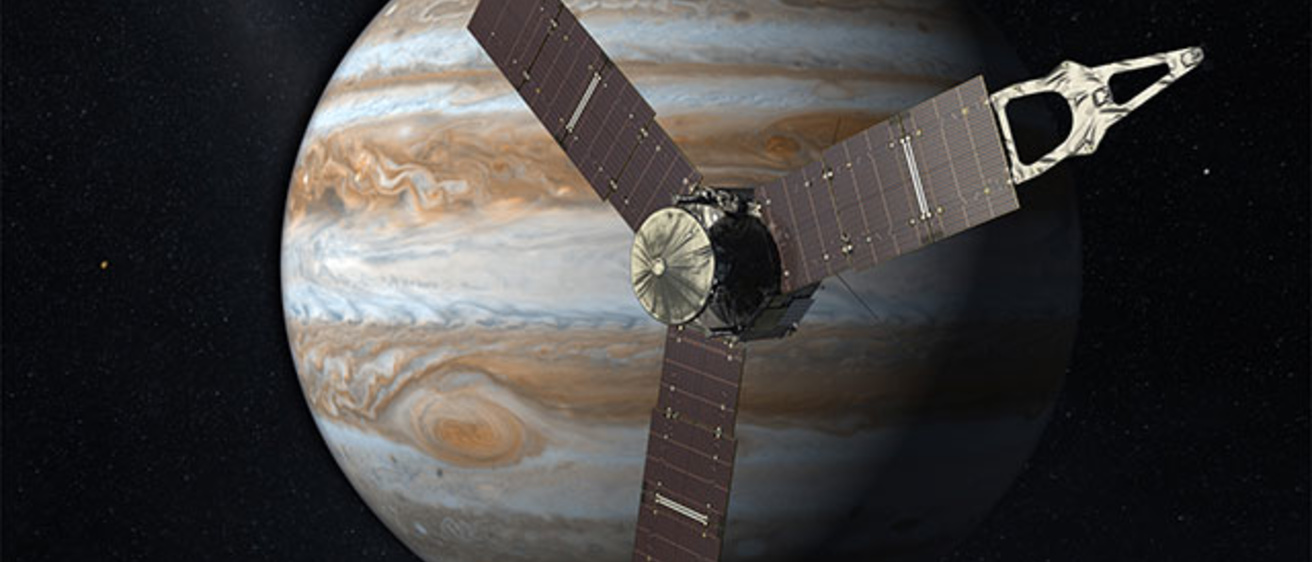The University of Iowa will have several more years to study the largest planet in our solar system.
The U.S. space agency NASA announced this week it will extend the Juno mission to Jupiter and its moons through September 2025, or until the spacecraft’s end of life. Launched in 2011, the Juno spacecraft arrived at Jupiter on July 4, 2016, with a planned mission completion in July 2021.
Along for the ride has been a radio- and plasma-wave instrument designed and built at Iowa. Called Waves, the instrument has yielded a trove of impactful discoveries, including the distribution of lightning on Jupiter, insights about the generation of intense auroras on the planet, and the first direct detection of small dust grains between Jupiter’s ring system and its atmosphere near the equatorial plane.

“Jupiter is such an extraordinary place. Only superlatives can describe it. So, it is extremely exciting to be able to continue to follow Juno as it orbits in the Jovian system for another four years,” says William “Bill” Kurth, research scientist in Iowa’s Department of Physics and Astronomy and lead investigator for the Waves instrument.
With the extension, Juno will make 42 additional orbits, including close passes of Jupiter’s north polar cyclones; flybys of the moons Ganymede, Europa, and Io; and the first extensive exploration of the faint rings encircling the planet.
The data Juno collects will contribute to the goals of the next generation of missions to the Jovian system—NASA’s Europa Clipper and the European Space Agency’s JUpiter ICy moons Explorer (JUICE). Juno’s investigation of Jupiter’s volcanic moon Io addresses many science goals identified by the National Academy of Sciences for a future Io explorer mission.
Kurth is excited for the extended mission, the new realms to be explored, and the promise of potentially more surprises about the gas giant and its cadre of satellites.
“Juno to date has raised so many new mysteries and questions,” Kurth says. “The extended mission will allow us to continue to delve deeper into how this planet works and interacts with its moons, rings, and magnetic environment.”
The Waves team at Iowa includes George Hospodarsky, co-investigator; Ali Sulaiman, research scientist; Sadie Elliott, postdoctoral scholar; and Donald Gurnett, professor emeritus and collaborator. Doug Menietti, also in physics and astronomy, is a Juno participating scientist closely tied to the Waves team.
“We have a close-knit team at Iowa focused on understanding what Juno is telling us about the Jupiter system,” Kurth says. “In addition to the scientists, there are several current staff at Iowa working to ensure the success of the investigation, not to mention dozens of engineers and technicians who were responsible for the development of the instrument itself. Planetary missions require large teams working together.”
JPL, a division of Caltech in Pasadena, California, manages the Juno mission. The mission’s principal investigator is Scott Bolton, of the Southwest Research Institute in San Antonio.
Iowa has had instruments on seven of nine American and European missions that have passed through the Jovian system.
